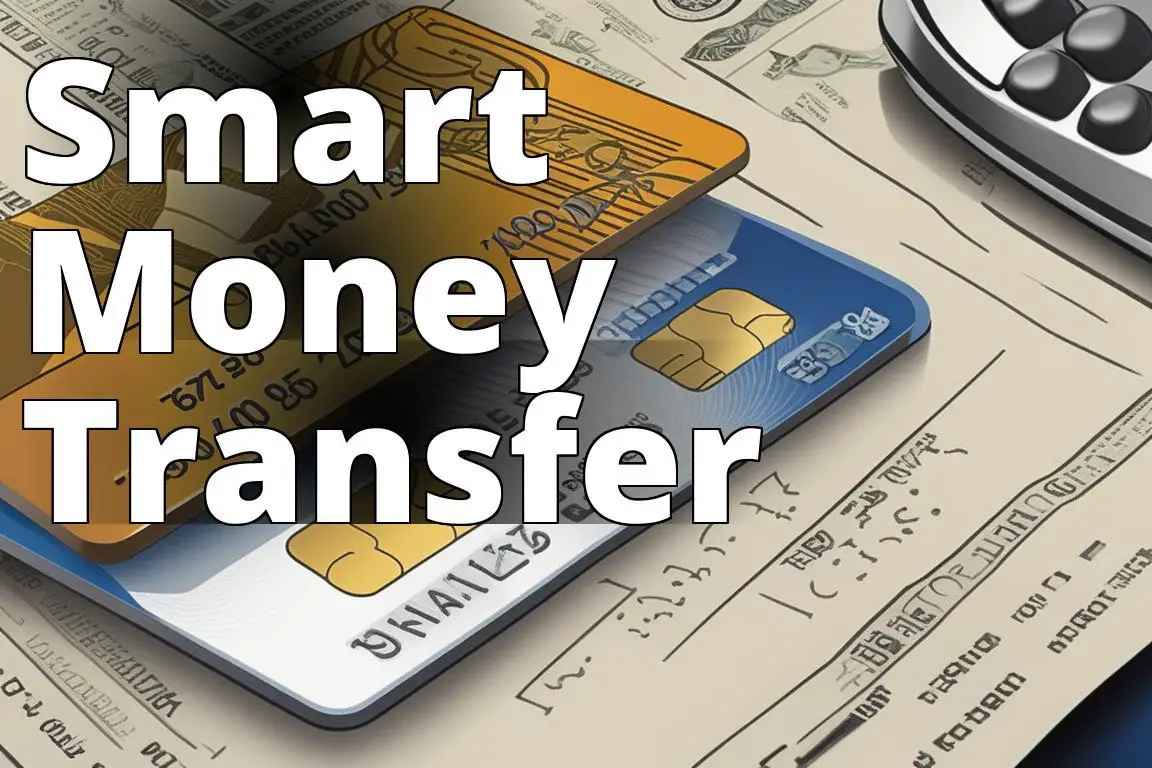Let it be said: the allure of plastic money is not without its pitfalls, especially when you find yourself wanting to transfer money from a credit card to a bank account. In the realm of personal finance, such maneuvers are often laced with fees, interest rates, and a labyrinth of terms and conditions. But, as a seasoned navigator of the fiscal maze, I will tell you this while not always advisable, there are times when transferring funds from your credit card to your bank account is a calculated risk worth taking.
Are Credit Card Money Transfers a Good Idea?
By reading this article, you will learn: – Pros and cons of credit card money transfers – Alternatives to transferring money from a credit card to a bank account – How to transfer money from a credit card to a bank account
Key Takeaways
In the financial odyssey of the average consumer, the decision to transfer money from a credit card to a bank account should not be taken lightly. The key takeaway from this journey is the understanding of what you’re getting into: the immediate liquidity versus the potential cost. It’s about knowing when to pull the trigger and when to holster your credit card.
What is a Credit Card Cash Advance?
A credit card cash advance is akin to a high-stakes bet in the casino of banking. It’s an option that allows you to withdraw cash from your credit card’s line of credit, often at an ATM, and deposit it into your bank account. This could be seen as a convenient hack when you’re in a pinch, but the house always wins. Cash advances come with towering interest rates and fees that can quickly turn a short-term solution into a long-term financial headache.
How to Transfer Money From a Credit Card to a Bank Account
The Direct Approach
The most straightforward method is obtaining a cash advance through an ATM and depositing that cash into your bank account. However, this is a costly affair, with cash advance fees typically ranging from 3% to 5% of the transaction plus a high APR that starts ticking the moment you touch that money.
The Indirect Approach
You might consider a money transfer credit card designed for this purpose. These cards often come with a promotional period offering low or no interest, which can be a godsend. But, tread carefully; once the promotional period ends, the standard interest rate can come crashing down like a wave of reality.
Digital Wallets and Peer-to-Peer Services
The digital age has ushered in services like PayPal, Venmo, and others, allowing a somewhat indirect path to transfer funds from a credit card to a bank account. These services typically charge a fee for credit card transactions, but they can be convenient and faster than a traditional bank transfer.
Balance Transfer Cards
Some might opt for transferring their credit balance to a balance transfer card that offers a 0% APR introductory period for transferred balances. This can be a clever move if managed properly, as it allows you to essentially borrow money interest-free for a period. However, transfer fees and the end of the introductory period are potential cliff edges you don’t want to tumble over.
Pros and Cons of Transferring Money from a Credit Card to a Bank Account
Pros:
- Liquidity: In times of financial drought, transferring money from a credit card to your bank account can be the rain that saves your crops.
- Promotional Offers: If played right, the promotional periods with low or no interest can be a masterstroke for managing finances.
Cons:
- Fees and Interest: The fees and interest associated with cash advances can metastasize, turning a quick fix into a festering financial wound.
- Credit Score Impact: High credit utilization and potential missed payments from mishandling the transferred funds could scar your credit score.
Personal Experience: Transferring Money From a Credit Card to a Bank Account
I recently found myself in a situation where I needed to transfer money from my credit card to my bank account. I had unexpected car repairs that needed immediate attention, and I didn’t have enough funds in my checking account to cover the expense. I decided to use the credit card cash advance option to transfer the required amount to my bank account.
The Process
I contacted my credit card company and requested a cash advance. The process was relatively straightforward, and the funds were transferred to my bank account within a few business days. However, I had to consider the cash advance fees and the higher interest rate associated with this transaction.
Lessons Learned
While the cash advance provided a quick solution to my financial dilemma, I realized that it came with additional costs that I hadn’t initially considered. In hindsight, I would have explored alternative options such as a personal loan or borrowing from a friend to avoid the higher fees and interest rates.
This experience taught me the importance of understanding the pros and cons of transferring money from a credit card to a bank account and considering all available alternatives before making a decision.
Alternatives to Transferring Money From a Credit Card to a Bank Account
Personal Loans: If you’re looking for a lump sum, a personal loan generally offers lower interest rates than a credit card cash advance and provides a structured repayment plan.
Savings: It’s old-fashioned, but your savings account is your financial bunkmate for a reason. If possible, dip into your savings before reaching for the credit card.
Sell Assets: Sometimes the solution lies in liquidating what you own. Selling items can be a more cost-effective way to generate funds without the shackles of debt.
Request a Payment Extension: If you’re transferring money to cover a bill, it’s often worth negotiating with the creditor for an extension or a payment plan.
Home Equity Line of Credit (HELOC): For homeowners, a HELOC can be a lower-interest way to access cash, using your home as collateral.
Frequently Asked Questions (FAQs)
Can you transfer money from a credit card to a bank account?
Yes, through methods like cash advances, balance transfers, or using peer-to-peer services, but it’s important to weigh the costs and risks.
Can you transfer money from a credit card to a bank account without fees?
Rarely. Most methods involve some sort of fee, though some balance transfer credit cards offer promotional periods where the fee is waived or reduced.
Can you transfer money from a credit card to a bank account using PayPal?
Yes, you can use PayPal to transfer funds from a credit card to your bank account, but a fee of around 2.9% plus a fixed fee will apply.
Can you transfer money from a credit card to a bank account using Venmo?
Indeed, Venmo allows you to add your credit card and transfer funds with a standard 3% fee charged for credit card transactions.
Can you transfer money from a credit card to a bank account using Zelle?
Zelle does not support credit cards for transferring funds. It’s linked directly to bank accounts.
Can you transfer money from a credit card to a bank account using Cash App?
Cash App permits credit card transfers, but a 3% fee is applied to these transactions.
Can you transfer money from a credit card to a bank account using Apple Pay?
Apple Pay itself doesn’t allow you to transfer from a credit card to a bank account. However, you can use it with other services that might.
Can you transfer money from a credit card to a bank account using Google Pay?
Google Pay allows you to transfer to some extent, but similar to Apple Pay, it might require a combination with other services and will incur fees.
The Bottom Line
Transferring money from a credit card to a bank account is financial trench warfare it’s messy, fraught with danger, and should only be done when the situation is dire or strategically sound. The allure of immediate cash can be tempting, but the aftermath often comes with a cost that can impact your financial future for much longer than the temporary relief lasts. Before you commit to such a transaction, consider the alternatives, understand the full scope of the fees and interest rates, and always have a repayment plan. Your financial health depends on it.



